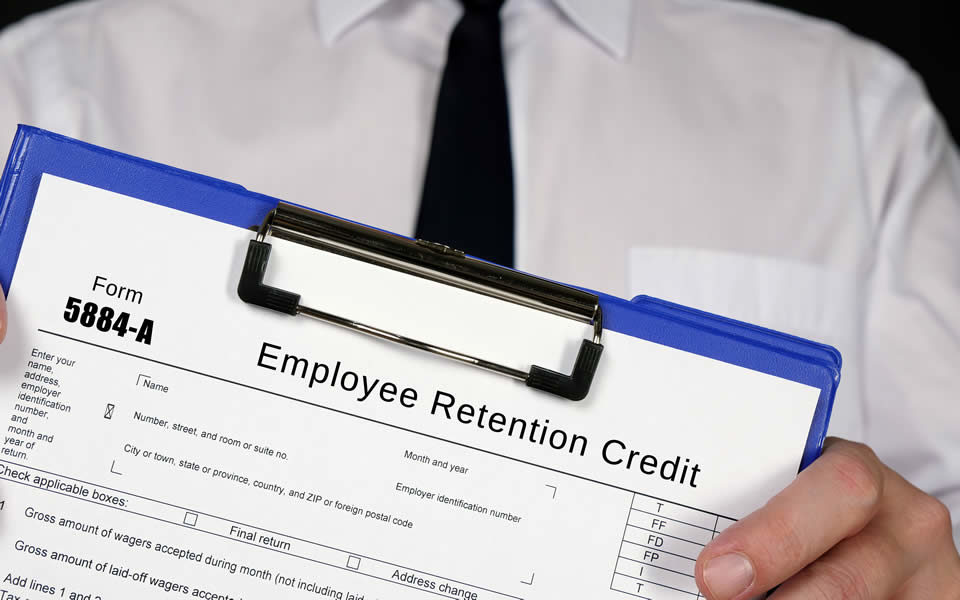Is Your Organization Eligible for a Credit of $14,000 per Employee in 2021?
By Mary Antonetti, Partner, Tax & Business Services
Everyone has heard of the Paycheck Protection Program (PPP) and the coveted forgivable loan. When the Taxpayer Certainty and Disaster Tax Relief Act of 2020 was signed into law on December 27, 2020, organizations were ready to go for Round 2, only to discover some new limitations. Whether or not your organization is eligible for the PP2 loan, you will want to explore your eligibility for the Employee Retention Credit. Both taxable and tax-exempt organizations are eligible.
Key Take Away: Both taxable and tax-exempt organizations may be eligible for a credit of up to $14,000 per employee for 2021.
The Employee Retention Credit (“ERC”) was originally enacted as part of the Coronavirus Aid, Relief, and Economic Security (CARES) Act and was scheduled to expire in 2020. The ERC was a credit of up to $5,000 per employee for 2020, up to $10,000 per employee for qualified wages and qualified health plan costs paid between March 13, 2020 and December 31, 2020. An eligible employer is an organization carrying on a trade or business that either fully or partially suspended operation during any calendar quarter in 2020 due to orders form an appropriate government authority limiting commerce, travel, or group meetings due to COVID-19 or had more than a 50% reduction in quarterly gross receipts measured year-over-year. If your organization had 100 or fewer employees, your qualified wages were wages paid to each employee. If you had more than 100 employees, eligible wages needed to be paid to employees for hours during which the employee did not provide services. Originally, if an organization received a PPP loan, it was not eligible to take the credit.
The new law significantly enhanced the credit that was set to expire. For the first two quarters of 2021, the threshold for reduction in gross receipts was lowered to 20% measured against the same quarter in 2019. There is also a safe harbor allowing an organization to take the credit if it has a reduction of 20% in the immediately preceding quarter. The credit was also increased to 70% of qualified wages up to $10,000 per employee per quarter. The maximum credit per employee for $20,000 of qualified wages, paid $10,000 per quarter, would be $14,000. Finally, an organization with 500 or fewer employees is now eligible to take the credit for all qualified wages and health plan costs. Only organizations with more than 500 employees are limited to qualified wages paid to employees who are not working. For both 2020 and 2021, aggregation rules will apply, requiring the aggregation of employees in a controlled group to determine the 100 or 500 employee threshold.
Key Take Away: Your organization may have the opportunity to go back and re-evaluate 2020 and tax a credit of up to $5,000 per employee.
The new law also added some retroactive provisions. If your organization otherwise met the requirements of the 2020 tax credit but did not take the credit because it had a PPP loan and did not believe it was eligible, eligibility may be reassessed. In some cases, an organization may have already requested forgiveness on its PPP loan and included all wages for the covered period, which may have resulted in submitting more wages than necessary to receive full forgiveness. We are currently awaiting much needed guidance from the IRS on any potential options for these organizations to potentially benefit from a 2020 credit.
The first step for your organization is to determine if you are an eligible employer. Meeting the requirement of a full or partial suspension of operations is not as simple as closing your office to keep employees safe and allowing for remote work. It requires an analysis which will entail reviewing governmental orders and their direct impact on your operations during the period. Your organization should work with your trusted advisor to determine if you met the requirements of a full or partial suspension.
For healthcare organizations, it is more likely you will be eligible as an employer meeting the requirements based on a reduction in gross receipts. Below are two charts that summarize the gross receipts reductions by quarter:
Eligibility for 2020
| Quarter | Compare | Eligibility |
|---|---|---|
| Q1 2020 | Q1 2020 vs Q1 2019 | Begins the First calendar quarter in 2020 with decline > 50% |
| Q2 2020 | Q2 2020 vs Q2 2019 | Begins the First calendar quarter in 2020 with decline > 50% |
| Q3 2020 | Q3 2020 vs Q3 2019 | Ends the First calendar quarter following a quarter with gross receipts > 80% |
| Q4 2020 | Q4 2020 vs Q4 2019 | Ends the First calendar quarter following a quarter with gross receipts > 80% |
Eligibility for 2021
| Employer Eligibility | Compare General Rule | Compare Alternative Rule | Required Decline in Gross Receipts |
|---|---|---|---|
| Q1 2021 | Q1 2021 vs Q1 2019 | Q4 2020 vs Q4 2019 | >20% |
| Q2 2021 | Q2 2021 vs Q2 2019 | Q1 2021 vs Q1 2019 | >20% |
An IRS section 501(c) tax-exempt organization needs to consider all operations without regard to the “trade or business” requirement.
I know many of you are asking how other stimulus money will impact your calculation of reduction in gross receipts. The IRS website has more than 100 FAQs relating to the ERC that, unfortunately, have not been updated to account for changes under the new law. FAQ 40 provides the following definition of gross receipts:
“Gross receipts” for purposes of the Employee Retention Credit for an employer other than a tax-exempt organization has the same meaning as when used under section 448(c) of the Internal Revenue Code (the “Code”). Under the section 448(c) regulations, “gross receipts” means gross receipts of the taxable year and generally includes total sales (net of returns and allowances) and all amounts received for services. In addition, “gross receipts” include any income from investments, and from incidental or outside sources.
Since the HHS provider relief funding will generate income includable on your tax return for both taxable and tax-exempt organizations, it is reasonable to expect the revenue will be includable in your calculation of gross receipts; however, no specific guidance has been issued as of this writing.
The new legislation clarified gross receipts for tax-exempt organizations are gross receipts under section 6033 of the Internal Revenue Code. This means the organization will use the method of accounting (i.e., accrual or cash) used to report revenue on its Form 990.
There is no one-size-fits-all solution to determining qualified wages for an eligible employer. You should perform a high-level review to estimate the potential for the credit. If your organization was fully or partially suspended, you will want to think through an easy way to capture data about employees whose jobs are impacted, which may include reports from your time system or employee surveys. As with all stimulus funding, there is no “double dipping,” so you will need to also determine what other stimulus payments or credits may impact your wages.
Key Take Away: The 2021 credit can be taking through reduction or deposits or on your quarterly return.
HOW DO I GET MY MONEY?
For 2021, it appears you will be able to receive the benefit of the credit by reducing your payroll deposits and by listing the credit on your quarterly Form 941. If the credit is greater than your required deposits, the IRS will refund the difference. An organization will need to work with its payroll company to determine the required documentation needed to reduce your deposits.
Marcum is here to help. There are many specific requirements that could impact your ability to receive the credit. If you believe you are eligible, consult your Marcum tax advisor to help ensure you have satisfied the eligibility requirements and are maximizing your credit opportunity.




















